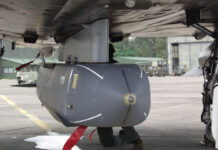Although in terms of wheeled armour, the 6×6 vehicle might have been overshadowed by the larger 8×8, it would appear that the 6×6 is gaining more momentum in the marketplace. This comes from offering much of the capability of an 8×8 system at reduced cost.
Currently, at the wheeled armoured vehicle marketplace, there is an immense variety of solutions to practically any conceivable mobility/protection requirement. A potential customer can select from 4×4, 6×6 and 8×8 options, and can then apply a host of criteria to select a vehicle that most closely meets their operational requirement. That being said, it would be fair to assume that the bigger the vehicle the higher the acquisition and sustainment cost. For this article, our interest is in the Medium Tactical Vehicle sector, which for our purposes is a 6×6 armoured vehicle.
The VBCI
Firstly, we need to position where the 6×6 vehicle fits in terms of the wheeled armour spectrum. At the top end of that spectrum comes the 8×8 vehicle. The French Army Véhicule blindé de combat d’infanterie (VBCI) is a classic example of a vehicle in this category. The VBCI for France is an Infantry Fighting Vehicle (IFV). It can weigh up to 32 tonnes and has a turret mounting a Nexter M811 25 mm cannon. The majority of vehicles in French service are the VBCI variant. There is a second variant though – the VPC command vehicle which has a Remote Weapon Station (RWS) mounting a machine gun instead of a turret. Apart from France, the VBCI has been exported to Qatar.
The BOXER
Another European 8×8 contender that is worthy of note is the BOXER. In the early 1990s, France and Germany started working on a wheeled armoured vehicle design. Britain joined the programme in the mid-1990s and it appeared that a cooperative European wheeled armour solution was in prospect. Things did not work out a planned. In 1999 France withdrew from the programme and went on to develop and acquire the VBCI. The Netherlands joined the programme in 2001, but the British left in 2003, leaving Germany and the Netherlands to proceed with the programme.
This led to the BOXER vehicle that we know today. It is a big vehicle with a combat weight in excess of 36 tonnes. Uniquely, BOXER can be fitted with mission modules to meet different operational requirements. The two original BOXER customers, Germany and the Netherlands, have since been joined by numerous export customers such as Australia, Britain, Lithuania and Slovenia.
The PIRANHA
There are other significant European 8×8 systems to consider as well, for example the General Dynamics European Land Systems (GDELS) PIRANHA, the latest variant of which is the PIRANHA 5, a 33-tonne vehicle, as used by Denmark, Romania and Spain. The PIRANHA also provided the basis for the STRYKER and LAV 8×8 vehicles used by the US military. Also notable in the 8×8 sector is the PATRIA AMV as used by Finland and Sweden amongst others, as well as being built under license in Poland as the ROSOMAK and in South Africa. Elsewhere, Italy has a range of 8×8 solutions to offer, as does FNSS in Turkey, with its PARS family of vehicles available in 4×4, 6×6 and 8×8 configurations.
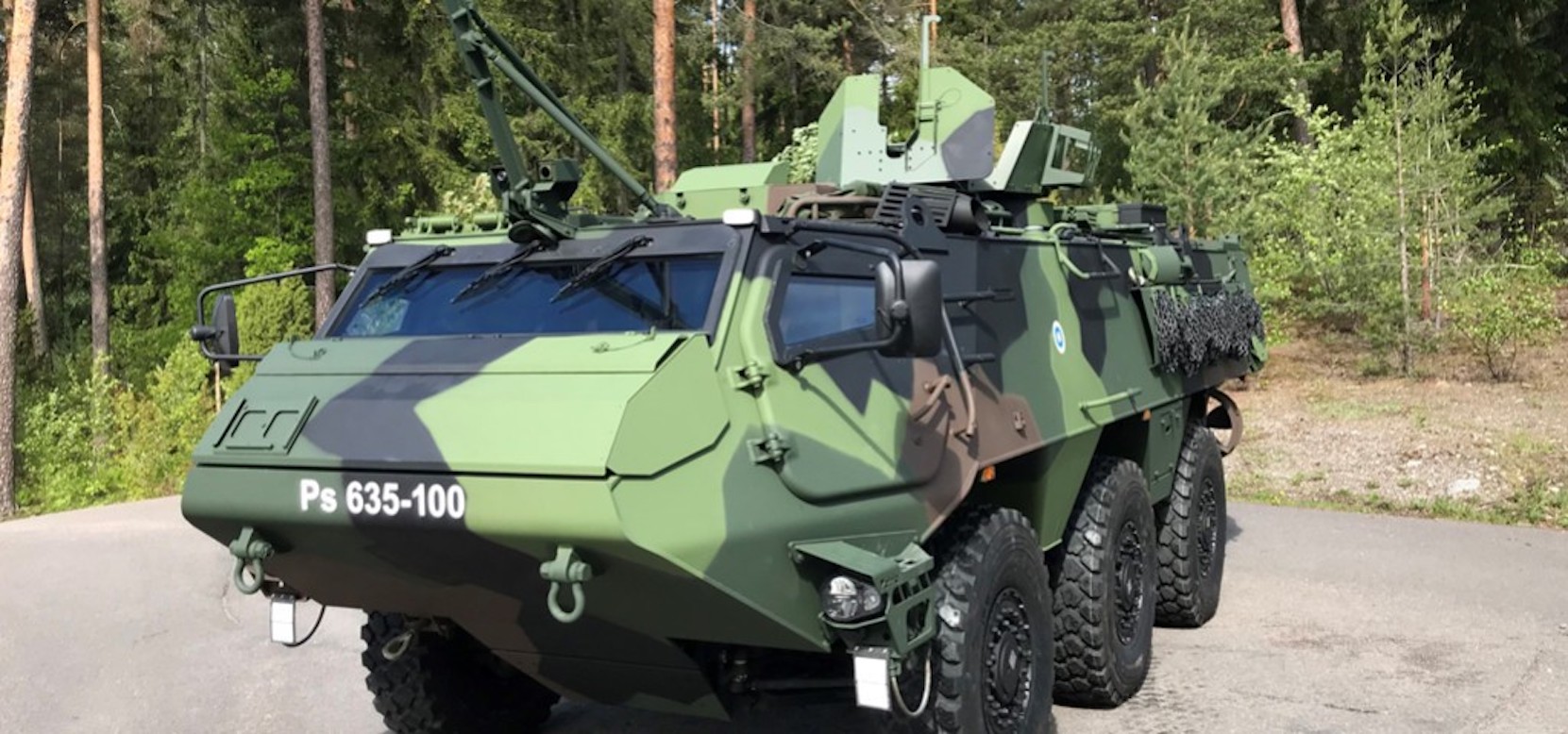
Photo : PATRIA
China, India, Israel, Serbia and the Ukraine are amongst the many countries who produce 8×8 armour, but one should also take into account the Russian BTR-82A. There are vast numbers of BTR-60/BTR-70 and BTR-80 vehicles spread all over Africa and Central Asia and many other locations. Potentially this creates a major market for a replacement vehicle and in many cases, this will not be confined to 8×8 vehicles. These might be too overspecified and costly for the requirements that might be generated in these markets.
The VAB MK3
In the 1970s, the French Army required a new wheeled armoured vehicle and this led to the development of the Véhicule de l’avant blindé (VAB). The VAB for the French Army was a 4×4 vehicle and was acquired in large numbers, some 4,000, and in multiple variants. The VAB as intended for the French Army was a 4×4 vehicle with a combat weight of more than 13 tonnes. Over the years, the vehicle has been subjected to a number of modernisation efforts. These included a new transmission and other automotive upgrades, improved protection and where applicable weapon system upgrades.
The VAB has been an excellent servant to the French Army and continues in service to this day, but the vehicle had already reached the limits of its potential. The more you upgrade the more you must upgrade. Increase the armour and you increase the weight, increase the weight and you need to increase the power to have the same level of performance and so on… You eventually reach a point where the vehicle has maxed out; there is nothing further that can be added. Once you reach the weight limit of a 4×4 system, the game is at an end.
The VAB was not solely a 4×4 armoured vehicle. For export markets there were two versions, a 4×4 and a 6×6. The VAB 6×6 was exported in multiple configurations which included an APC, a 81mm mortar carrier, an anti-tank vehicle with the HOT missile system, an air defence vehicle with two 20mm cannons, an anti-riot vehicle and a maintenance/recovery variant. The VAB was particularly successful in Africa and the Middle East, where major customers included Oman and Qatar.
The 6×6 version of the VAB was a larger and heavier vehicle than its 4×4 sibling, but the 6×6 version had one key advantage that the 4×4 did not, and that was significant growth potential. That contention is proven by the latest development of the VAB in the form of the VAB MK3. According to Arquus, who developed and produce the VAB MK3, growth potential is critical for the longevity of the design and its adaptability to evolving operational requirements. For example, in comparison to when the VAB emerged back in the 1970s, the French soldier of today is taller and heavier. Add in all of the extra equipment required these days and you have a significant extra weight burden to support.
This heavier weight demand creates a dilemma. You do not want to reduce the number of dismounts you can carry because that reduces your operational capability. You have to find a weight saving somewhere, so you could look at reducing protection, but that would be self-defeating. Then you might try reducing fuel capacity to save weight, again a self-defeating action. Or you come up with a 6×6 vehicle that can inhabit the 20 to 25 tonne weight category and offer the broadest range of configurations, with optimum levels of protection and mobility.
The VAB MK3 is available in multiple variants which include:
- APC
- Infantry Combat Vehicle mounting a turret, from John Cockerill or Nexter for example, mounting a 20/25/30mm cannon
- Fire Support Variant with a 90mm low pressure gun
- mortar carrier (81mm or 120mm)
- command post
- ambulance
- riot control vehicle
The VAB MK3 equipped with a turret-mounted 25 or 30mm cannon might not have the protection of the VBCI as used by the French Army, but it can carry out more than 80 per cent of the VBCI mission at less than half the procurement cost, according to French industry sources.
Market Potential
Arquus sees a strong international market potential for the VAB MK3. They point to Eastern Europe where there are strong requirements for protected mobility, with many applications not requiring the overspecification and extra cost of an 8×8 vehicle with its heavier weight. Another market area of considerable interest is in Africa, where the VAB MK3 would be the obvious successor to a range of Soviet-era wheeled vehicles such as the BTR-60/BTR-70/BTR-80. The performance advantages of a modern 6×6 over these elderly and limited 8×8 vehicles are obvious.
The arrival of the VAB MK3 also offers existing VAB users a new upgrade path for their vehicles. Qatar has a large fleet of VAB MK1 vehicles acquired more than 25 years ago, rather than replace them with a new vehicle Qatar looked at options to extend the service life of their existing fleet. This led Qatar to establish a VAB rebuild facility locally. The automotive element is the installation of the complete VAB MK3 driveline from Arquus. In parallel, protection is improved, as is internal wiring and other components. The end result is an armoured vehicle with enhanced capabilities, plus the possession of the infrastructure needed for maintenance and support of the vehicle fleet in-country.
The VAB MK3 is also making a contribution to indigenous wheeled armoured vehicle programmes in Indonesia. The Indonesian Army or Tentara Nasional Indonesia Angkatan Darat (TNI-AD) had developed a requirement for a new 6×6 armoured vehicle family with multiple variants, with indigenous company PT Pindad being charged with the development and manufacture of the vehicle. The path to the development of the new 6×6 vehicle started in the early 2000, when Pindad developed a number of wheeled armour solutions, based on commercial chassis, for the TNI-AD. These efforts led to the development of a 6×6 solution in the form of the ANOA.
The ANOA
The ANOA prototype entered testing in 2007 by which time it was clear that this was a military specification vehicle. The design was obviously influenced by that of the VAB; indeed the driveline selected for the ANOA was that of the Arquus VAB MK3 which was a sensible solution as it de-risked the mobility elements of the vehicle. The first ANOA vehicles entered service with the TNI-AD in 2009. Many hundreds have been purchased since then and the vehicle remains in production at Pindad.
The ANOA has an empty weight of 12.5 tonnes and a combat weight in the region of 14.5 tonnes, with protection meeting STANAG 4569 Level III requirements. Variants include:
- standard APC
- command vehicle
- mortar carrier with 81mm mortar
- recovery vehicle
- logistics vehicle
- an amphibious variant
A fire support variant of the ANOA known as the BADAK was also developed. The initial version mounted a turret taken from a TNI-AD SCORPION 90 tank with a John Cockerill 90mm gun. The latest version of the BADAK is equipped with a John Cockerill turret mounting a 90mm low pressure gun.
The TNI-AD has assembled an eclectic mix of 6×6 armoured vehicles. For example, the SALADIN armoured car and the SARACEN APC were acquired from Britain in the 1960s and remained in service for many years, with a number of different local upgrades. The arrival of BADAK will see the retirement of the SALADIN by the TNI-AD, while the SARACEN will continue in service until eventually replaced by the ANOA. Interestingly, the TNI-AD also purchased a small number of WZ551 6×6 vehicles from China. This was despite the fact that the ANOA was available at that time.

Photo: Exército Brasileiro
Global Solutions
What is clear about the 6×6 armoured vehicle sector is that there are a profusion of choices available from multiple manufacturers. For example, Paramount Group offer a range of wheeled armoured solutions, including the 6×6 MBOMBE 6 vehicle. Elsewhere, there are other 6×6 solutions. In France, the Nexter TITUS has an empty weight of 17 tonnes, an operational weight of 23 tonnes and a maximum weight capability of 27 tonnes, indicating growth potential. The vehicle is based on a Tatra truck chassis from the Czech Republic, with the Czech Army ordering 62 TITUS vehicles. The Czech Republic has turned into an important customer for Nexter, ordering 52 CAESAR artillery systems mounted on an 8×8 Tatra truck in 2020.
The Republic of Korea Army (ROKA), perhaps inspired by the US Army STRYKER Brigade organisation, decided that it needed a family of wheeled armoured vehicles. Rather than purchase the STRYKER 8×8 from the US, in 2012 they decided to turn to local industry to develop a suitable solution. By this point, the majority of ROKA armoured vehicles were locally designed and manufactured. The ROKA requirement was for a total of 600 6×6 and 8×8 vehicles, with Hyundai Rotem being selected as offering the best design for the programme.
The Hyundai Rotem vehicles were the K806, a 6×6 system, and the K808, an 8×8 system. Once selected by ROKA, production began in late 2018, with the K806 being designated as the KW1 and the K808 as the KW2. The majority of vehicles acquired by ROKA were the 8×8 KW2, although 100 KW1 in three variants were ordered. Hyundai Rotem has also looked to achieve export orders for both their 6×6 and 8×8 vehicles.
FNSS in Turkey has had great success with its PARS wheeled armoured vehicle family. Originally developed to meet the requirements of the Turkish military, the PARS has gone on to obtain major export orders. The first export breakthrough was in Malaysia where the 8×8 variant of the PARS was manufactured under the license as the AV8 GEMPITA, in multiple variants with Malaysian-specific equipment fits. Both the 6×6 and 8×8 versions of the PARS would be acquired by Oman, while Libya would be supplied with both 6×6 and 8×8 vehicles. Turkish Land Forces Command (TLFC) have acquired the PARS in both 6×6 and 8×8 configurations.
Another Turkish company with wheeled armour interests is Otokar. They developed the ARMA vehicle available in both 6×6 and 8×8 configurations, initially to meet TLFC requirements. The first export order came in late 2010 from Bahrain, followed by a second order in June 2011. In total, 73 ARMA were acquired by Bahrain. The 8×8 variant was selected by the United Arab Emirates (UAE) as the RABDAN. Initially, the vehicles were supplied from Turkey and later locally produced in the UAE. The initial batch of vehicles numbered 400 examples, with the total purchase expected to reach 700 vehicles.

Photo: Bundesheer
European Activity
Earlier in this article we mentioned the PATRIA AMV in the context of 8×8 vehicle solutions, but the Finnish company is equally active in the 6×6 vehicle sector. In the 1980s, the XA 6×6 vehicle was developed to meet Finnish Defence Force requirements. The initial variant was the XA-180. This was followed by product improved versions such as the XA-185/XA-186, then came to XA-188 and the final variant was the XA-200 series. Apart from Finland, the vehicle was acquired by:
- Austria (UN missions)
- Denmark (UN missions)
- Eire (UN missions)
- Ghana (UN missions)
- the Netherlands
- Norway
- Sweden
The 90 XA-188 units in the Netherlands were then sold on to Estonia.
PATRIA then went on to develop a successor to the XA, this would be a modular 6×6 vehicle utilising the best features of both the XA and AMV, which eventually evolved into the Common Armoured Vehicle System (CAVS). Back in October 2020, Finland and Latvia signed an agreement covering R&D for the CAVS vehicle. Then in August 2021, Latvia signed an agreement to acquire over 200 CAVS vehicles and the first CAVS vehicles were delivered to Latvia in October 2021. Finland then stated its intention to order 160 CAVS vehicles.
The scope of CAVS expanded further at the end of 2021 when Sweden announced its intention to join the programme. Its participation became official with the signature of an agreement in June 2022. By this point, Estonia had joined CAVS and in June 2022, Germany signed a Statement of Intent to join CAVS. In terms of the future of European 6×6 armour, the CAVS programme has obtained a great deal of momentum in a very short time.
JAGUAR and GRIFFON
If there is one European country that has always shown its commitment to 6×6 armour, that would be France. Under the SCORPION programme, two 6×6 vehicles are entering service. These are the Engin Blindé de Reconnaissance et de Combat (EBRC) JAGUAR, an armoured reconnaissance and combat vehicle, and the Véhicule Blindé Multi-Rôles (VBMR) GRIFFON. The JAGUAR will replace two 6×6 reconnaissance vehicles in the form of the AMX-10RC and the ERC-90 SAGAIE, as well as the version of the VAB mounting the HOT anti-tank missile system. A total of 62 JAGUAR had been ordered between 2017 and 2020, with 20 delivered at the end of 2021. 18 more JAGUAR are due to be delivered in 2022. The Direction générale de l’armement (DGA) ordered a further batch of 88 JAGUAR vehicles in May 2022.

Photo: Armée de Terre
The GRIFFON will replace the VAB fleet in French Army service. The DGA ordered 319 GRIFFON in 2017, followed by an additional 271 in 2020, with 339 vehicles delivered by the end of 2021, in 2022 a total of 113 GRIFFON are due to be delivered. The DGA placed an order for 302 GRIFFON in May this year, as well as an order for 54 of the mortar carrier variant, the Mortier embarqué pour l’appui au contact (MEPAC), which carries a 120 mm mortar.
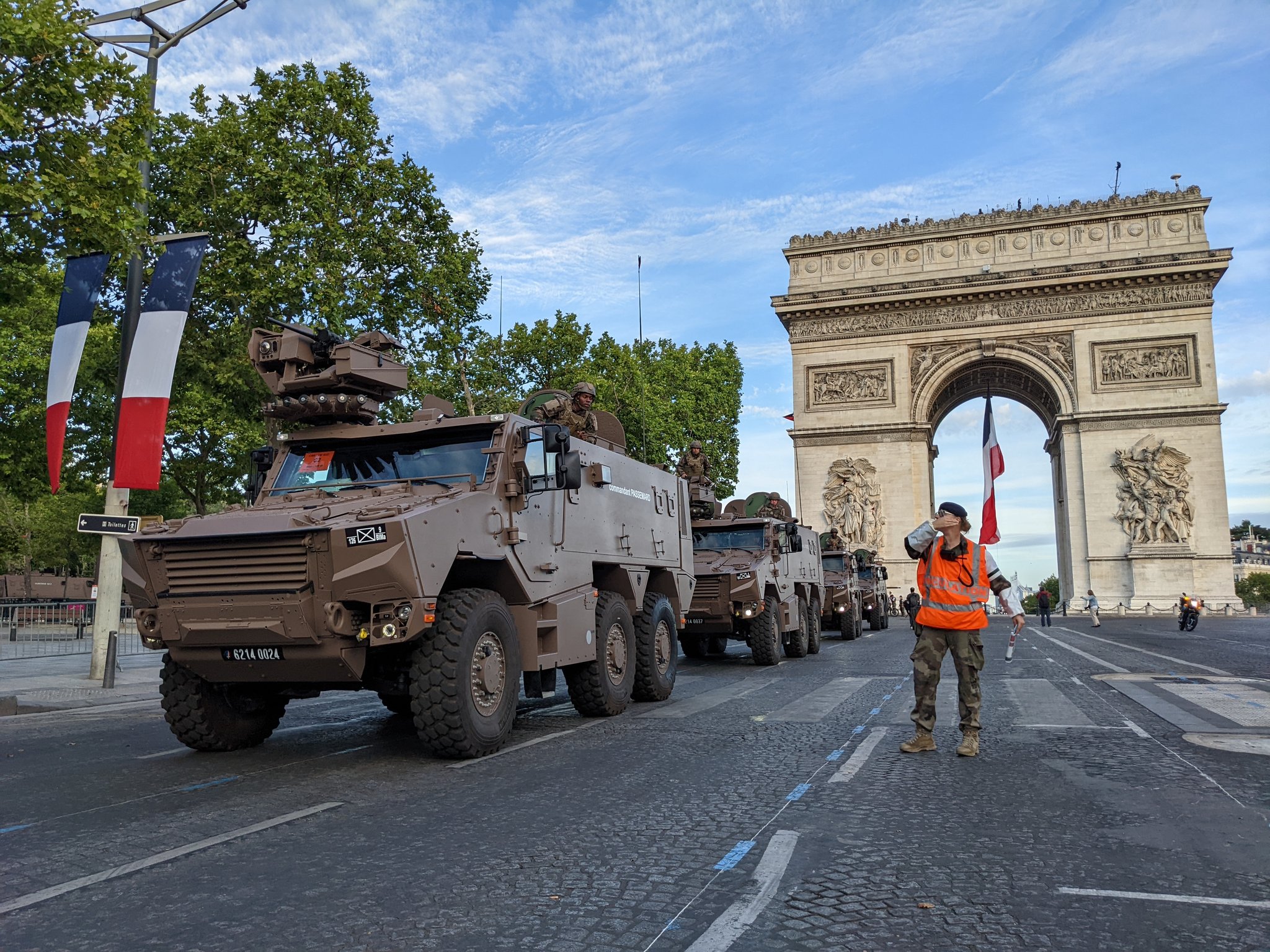
Photo: Armée de Terre
The JAGUAR and the GRIFFON have received their first export order in 2018 when Belgium selected these vehicles for its Capacités Motorisée (CaMo) programme. Here the Belgian Land Component will equip its mechanised brigade primarily with French materiel, a total of 60 JAGUAR and 382 GRIFFON are to be acquired. Belgium will now also acquire two batteries of MEPAC mortar vehicles under the CaMo programme.
With JAGUAR and GRIFFON, France has adopted two advanced 6×6 armoured vehicle solutions that will benefit from an extended production line due to the size of French Army orders and, of course, the Belgian CaMo programme. This would seem to indicate that there is great potential for export orders for these 6×6 vehicles.
Although in terms of wheeled armour, the 6×6 vehicle might have been over shadowed by the larger 8×8, it would appear that the 6×6 is gaining more momentum in the marketplace. This comes from offering much of the capability of an 8×8 system at reduced cost. However, in an ideal world ground forces would be able to utilise both 6×6 and 8×8 vehicles as they do provide the most effective force mix. Into the future though, with 6×6 systems such as JAGUAR, GRIFFON and CAVS, it would appear that the 6×6 could become the answer to most protected mobility questions.
David Saw



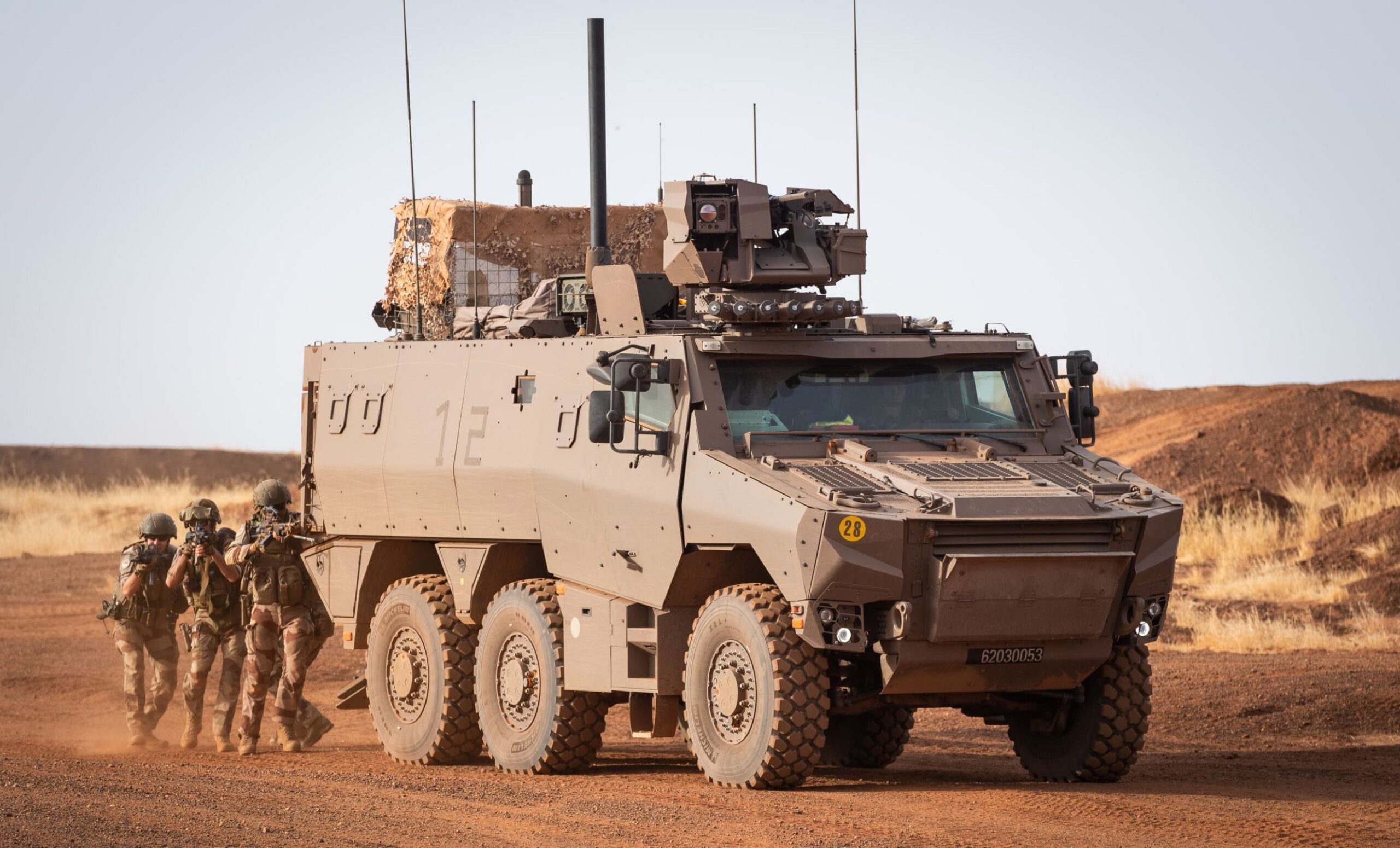

![A luxury or a necessity? Fire control systems for small arms Acquired as part of the Next Generation Squad Weapons (NGSW) programme, the new US Army M7 rifle and the 6.8 × 51 mm Common Cartridge, shown here paired with the Vortex Optics XM157 SA-FCS mounted on the weapon’s Picatinny rail. [US Army]](https://euro-sd.com/wp-content/uploads/2025/11/M7-Rifle-Kopie-218x150.jpg)
![Submachine guns: From their origins to the present day The ubiquitous 9 × 19 mm Luger round, today commonly referred to as 9 mm Parabellum, was the round of choice for the first SMGs, and continues to be widely used today. [USMC/Cpl Jonathan Beauchamp]](https://euro-sd.com/wp-content/uploads/2025/11/9mm-closeup_USMCCpl-Jonathan-Beauchamp-Kopie-218x150.jpg)
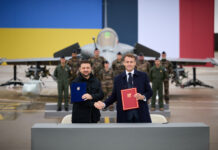
![Middle Eastern combat aircraft: Programmes and capabilities A Mirage F1BQ of the IRIAF, on 16 September 2009. Iran’s air forces have undergone a steady decline since the Revolution. [Shahram Sharifi, via Wikimedia Commons, CC-BY-SA-4.0]](https://euro-sd.com/wp-content/uploads/2025/11/Mirage-F1BQ-of-the-IRIAF-218x150.jpg)

![The US and China: Deep dependency amid increasing strategic competition Looking back at the heights of US strategic dominance in the 1990s, by 2025 the sun looks to have well and truly set on the unipolar international system. [US ANG/MSgt Luke Olson]](https://euro-sd.com/wp-content/uploads/2025/10/Sunset_US-ANGMSgt-Luke-Olson-Kopie-218x150.jpg)

![Market overview: Longevity and innovation in the machine gun sector The L7A2 General Purpose Machine Gun (GPMG) in action during a counter-ambush in Afghanistan by British troops. The L7A2 is the British version of the FN MAG, arguably the most successful Western GPMG. [Crown Copyright]](https://euro-sd.com/wp-content/uploads/2025/09/Afghan-GPMG-Kopie-218x150.jpg)
